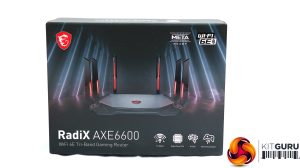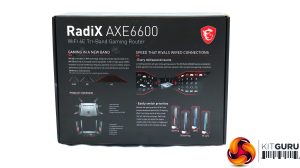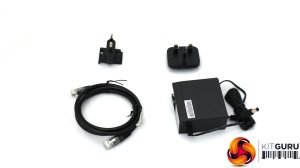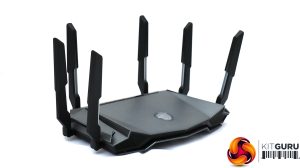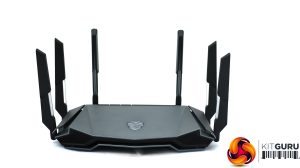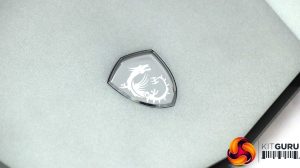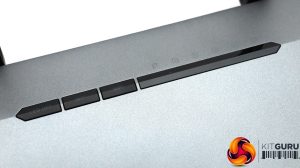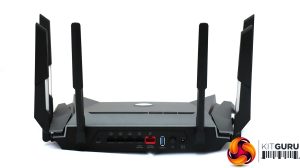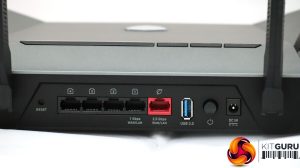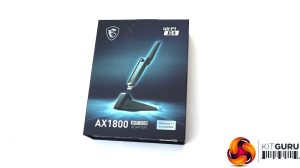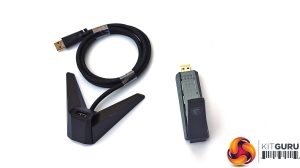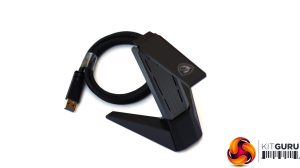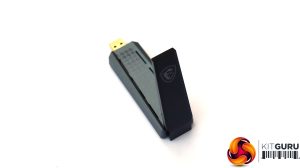The RadiX comes in a typical MSI box, which doesn't economise on colourful cardboard unlike Synology's packaging. There's plenty of information and alluring imagery emblazoned on the top and bottom.
The power supply comes with European and UK plug pin options, and there's a Cat 5 Ethernet cable included as well, intended for use with the broadband modem.
This is an aggressively styled router, with six chunky antennae ranged around the sides and rear. These are permanently attached, so there's no need to connect them yourself during installation. Each one has a translucent tube embedded, which will be lit with a different colour depending on the mode preset chosen in the user interface, which we will get to shortly. The MSI logo on top is actually a button, which lets you quickly change between these router modes.
A row of lights and some buttons are subtly integrated into the top of the device near the rear. When the router is off, you might not even realise these features are here. The lights indicate status for the four LAN and single broadband WAN ports. From left to right, the buttons turn the LED lighting off and on, enable or disable the WiFi radios, and call up the WPS automated setup function.
Apparently, this is the first router to use heat pipes for cooling, although in practice that's not a hugely significant feature.
All the ports can be found in a row on the rear. On the far left is a reset button, followed by four Gigabit Ethernet LAN ports and the 2.5Gbit Ethernet WAN port. However, as the visible markings show, you can also use LAN Port 1 for the WAN, freeing up the 2.5Gbit for connecting a high-bandwidth networked device such as a NAS drive or uplink to another networking switch.
Next is the USB port, which is labelled 3.0, now known as USB 3.2 Gen 1. This delivers a theoretical 5Gbits/sec bandwidth. The USB port can be used for sharing storage but not a printer. Next along is a physical on/off switch and the power connection.
Overall, the physical characteristics of the RadiX AXE6600 are decent but unexceptional, apart from the lighting on the antennae. A USB port is typical but not universal, so it's good to see one of these. It's also good to see a 2.5Gbits/sec WAN port. Generally the build feels solid, although the elevated plastic wings on either side come off rather easily. Otherwise, so far so good for MSI.
MSI also sent us its newly released AX1800 USB WiFi adapter, which is WiFi 6 but not 6E. We installed that and tested it, although the drivers weren't officially available from MSI's own website at the time of writing (we found them elsewhere).
 KitGuru KitGuru.net – Tech News | Hardware News | Hardware Reviews | IOS | Mobile | Gaming | Graphics Cards
KitGuru KitGuru.net – Tech News | Hardware News | Hardware Reviews | IOS | Mobile | Gaming | Graphics Cards


